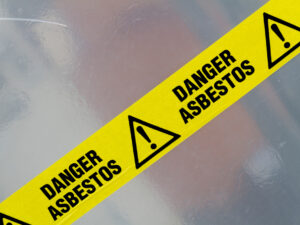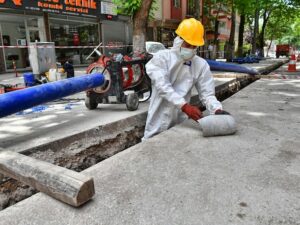
Increase asbestos removal efficiency by practicing good housekeeping
Asbestos is a mineral that was commonly used in construction materials due to its strength, durability, and resistance to heat and fire. Unfortunately, it is also highly toxic, and exposure to its fibres can cause a variety of health problems; including lung cancer, mesothelioma, and asbestosis. This makes proper training and safety procedures essential for anyone who may come into contact with asbestos-containing materials.
The most important thing associated with asbestos is the fact that it becomes dangerous when it becomes airborne. We as humans breathe air to obtain the oxygen we need to survive. When there are asbestos fibres in the air we breathe, we are highly likely to inhale these asbestos fibres along with the much-needed oxygen. The asbestos fibres can become airborne by simply breaking or cutting into asbestos-containing materials. These fibres can remain in the air for hours, and anyone who breathes them in is at risk of developing serious health problems, such as lung cancer, mesothelioma and asbestosis.
Preventing asbestos exposure
To help prevent exposure, workers who may come into contact with airborne asbestos fibres must be properly trained on safe handling techniques. This training should cover topics such as identifying asbestos-containing materials, using the proper personal protective equipment (PPE), and practising safe work procedures to minimise the risk of releasing fibres into the air.
In terms of PPE, workers should wear protective clothing, including type five coveralls, FFP2 dust masks, safety glasses and disposable gloves. All PPE should be discarded as asbestos waste after daily use. Respirators are essential, as they form the main shield between the dangerous airborne asbestos fibres and the lungs of the employees handling the asbestos-containing materials.
When working with asbestos-containing materials, workers should also use tools that are specifically designed to minimise the risk of releasing fibres, such as wetting methods, shadow vacuuming fitted with HEPA filters, and enclosing asbestos-containing materials in HDPE sheets. This sheeting acts as a barrier, preventing the spread of fibres to other areas of the site.
Containing asbestos
It is important to ensure that the sheeting is properly sealed, with no gaps or tears. Additionally, the asbestos-covered sheeting should be handled and moved carefully to avoid disturbing any fibres. Proper containment of the asbestos-containing material during the removal process, can also speed up the cleaning process, while reducing the risk of exposure to workers and members of the public.
In addition to the correct use of PPE, good housekeeping is critical for minimising the risk of asbestos exposure. Any asbestos-containing materials that are removed must be properly contained and disposed of, and any work areas should be thoroughly cleaned to remove any lingering fibres.
Legal and financial risks
Furthermore, due to the high health risks associated with asbestos, there are legal and financial risks to consider. Failing to properly follow safety procedures can result in fines and legal liabilities, and costly project delays.
It is important to note that any asbestos removal should be conducted by trained professionals using appropriate equipment and following established protocols. Proper asbestos training is essential for all workers involved in asbestos removal and handling, regardless of language or cultural background.
In conclusion, asbestos is a dangerous mineral that can cause serious health problems. Exposure to its fibres should be avoided as far as reasonably practicable. This is why proper training and safety procedures are essential for anyone who may come into contact with asbestos-containing materials.
By following these procedures and taking the necessary precautions, workers can help to minimise the risk of exposure to dangerous fibres, while also ensuring that projects run smoothly and without incident.
Reducing risks with PPE
Additionally, the use of protective equipment such as FFP 2 respirators, gloves, safety glasses and type 5 coveralls, as well as methods to minimise the risk of releasing fibres, can help to further reduce the risk of exposure.
Finally, good housekeeping and the proper disposal of asbestos-containing materials are critical for minimising environmental contamination and reducing the risk of exposure to workers and members of the public. All workers involved in asbestos removal and handling need to receive proper asbestos training and follow established protocols to ensure that they are equipped to handle this dangerous material safely and effectively.
For assistance in any Asbestos related projects, please do not hesitate to contact Apex Environmental.








